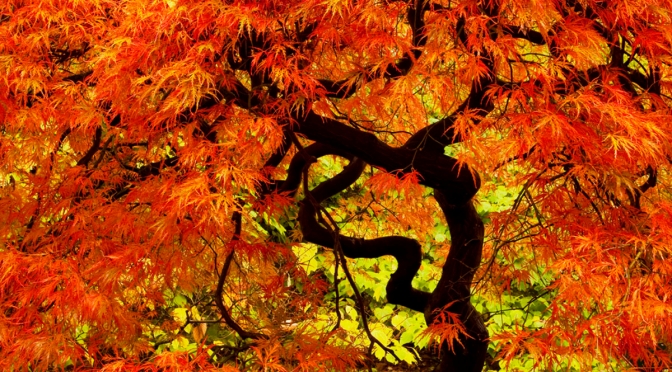The two English translations of the Japanese maple, or “momiji”, are “baby’s hands” and “becomes crimson leaves”. The first meaning has some Japanese cultural significance. It is believed that passing a newborn baby through the branches of a Japanese maple encourages a long, healthy and prosperous life for the child. The second meaning is best described by a popular Japanese expression, “Yama ga moeru” which means “burning mountain in autumn”. You may have the opportunity to see an entire mountainside of wild Japanese maples turn a fiery red in the autumn season.
Here are koto music about trees, leaves, and related themes:
The most popular of Japanese maples are the red and green variations, but there are countless (over 1,000) variations of colors, sizes and shapes of both the leaves and trees. The Japanese red maple has been cultivated for over 300 years. The Iroha- momiji, or green leaf Japanese maple is native to the Korean Peninsula, China, and Japan. The wild Japanese maple has green leaves in the spring and summer that turn yellow, orange, bright red, pink, or purple in the fall. Younger trees take on the shape of a large challis or bowl, while more mature trees are layered and have a dome-shaped image. Somewhat unique to the Japanese maple is that a parent Japanese maple tree may produce seedlings that have completely different shapes, colors, sizes and structures than its parent (a message here for our own parenthood?).
The flowers come in spherical clusters and have five purple or red sepals and five white petals. They give the bare branches an attractive red glow in early spring.
It is customary for Japanese people to take an annual autumn trek to the mountains of Japan, known as momiji-gari (“Maple tree hunting/ viewing”). This is similar to Canadians and Americans who take annual treks to the mountains for viewing the yellowing of aspen in the western Rocky Mountains; or the east- and midwesterners viewing the coloring of maple trees. However, momiji-gari has a spiritual significance. For most Japanese, this annual trek is also a Shinto spiritual trip to commune with the spirits who dwell in the trees, the mountains, and elsewhere in the Natural world.


Beautiful!